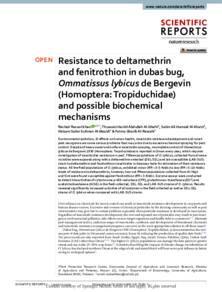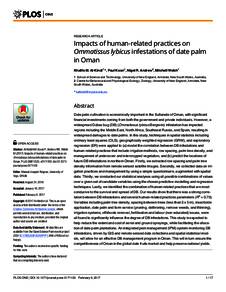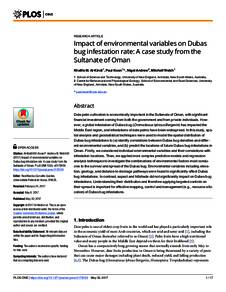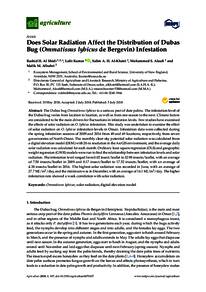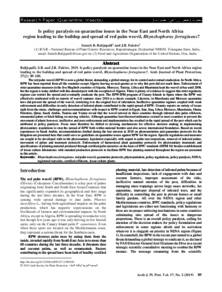Document
Resistance to deltamethrin and fenitrothion in dubas bug, ommatissus lybicus de bergevin (homoptera: tropiduchidae) and possible biochemical mechanisms.
Identifier
DOI: 10.1038/s41598-020-70150-7
Source
Scientific Reports. v. 10, 1, 13220
Contributors
Al‑Khatri, Salim Ali Humaid., Author
Al‑Rawahi, Fatma Gharib., Author
Country
United States.
City
New York
Publisher
Nature Research.
Gregorian
2020-12-01
Language
English
English abstract
Environmental pollution, ill-effects on human health, insecticide resistance development and insect pest resurgence are some serious problems that may arise due to excessive chemical spraying for pest control. Despite of heavy aerial and surface insecticide spraying, incomplete control of Ommatissus lybicus de Bergevin 1930 (Homoptera: Tropiduchidae) is reported in Oman every year, which requires investigation of insecticides resistance in pest. Fifteen populations of O. lybicus, collected from diverse vicinities were exposed along with a deltamethrin-selected (DEL-SEL) and lab-susceptible (LAB-SUS) strain to deltamethrin and fenitrothion insecticides in bioassay tests for estimation of their resistance status. All the field populations of O. lybicus, exhibited minor (RR = 3–5-folds) to low (RR = 5–10-folds) levels of resistance to deltamethrin, however, two out fifteen populations collected from Al-Hajir and Sint were found susceptible against fenitrothion (RR 3-folds). Enzyme assays were conducted to detect the activities of cytochrome p-450-reductase (CPR), glutathione s-transferase (GST) and acetylcholinesterase (AChE) in the field collected, DEL-SEL and LAB-SUS strains of O. lybicus. Results revealed significantly increased activities of all enzymes in the field collected as well as DEL-SEL strains of O. lybicus when compared with LAB-SUS strains.
ISSN
2045-2322
Category
Journal articles

